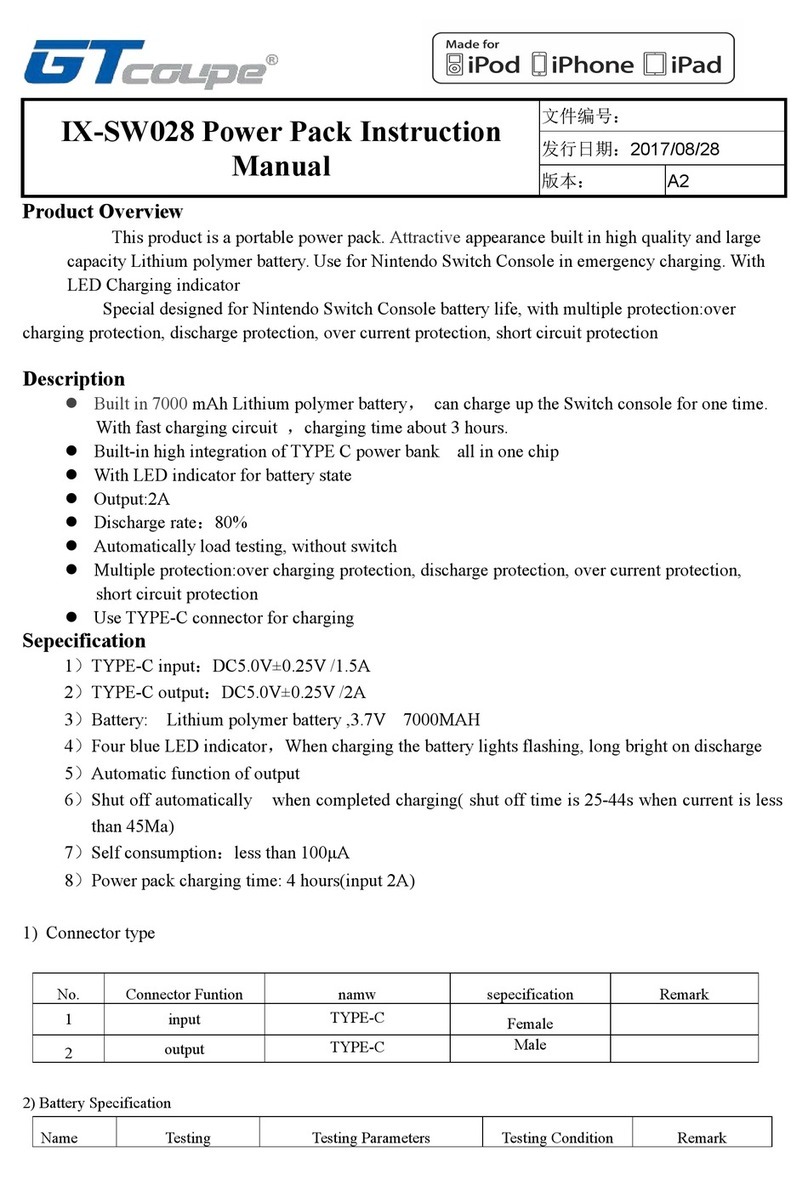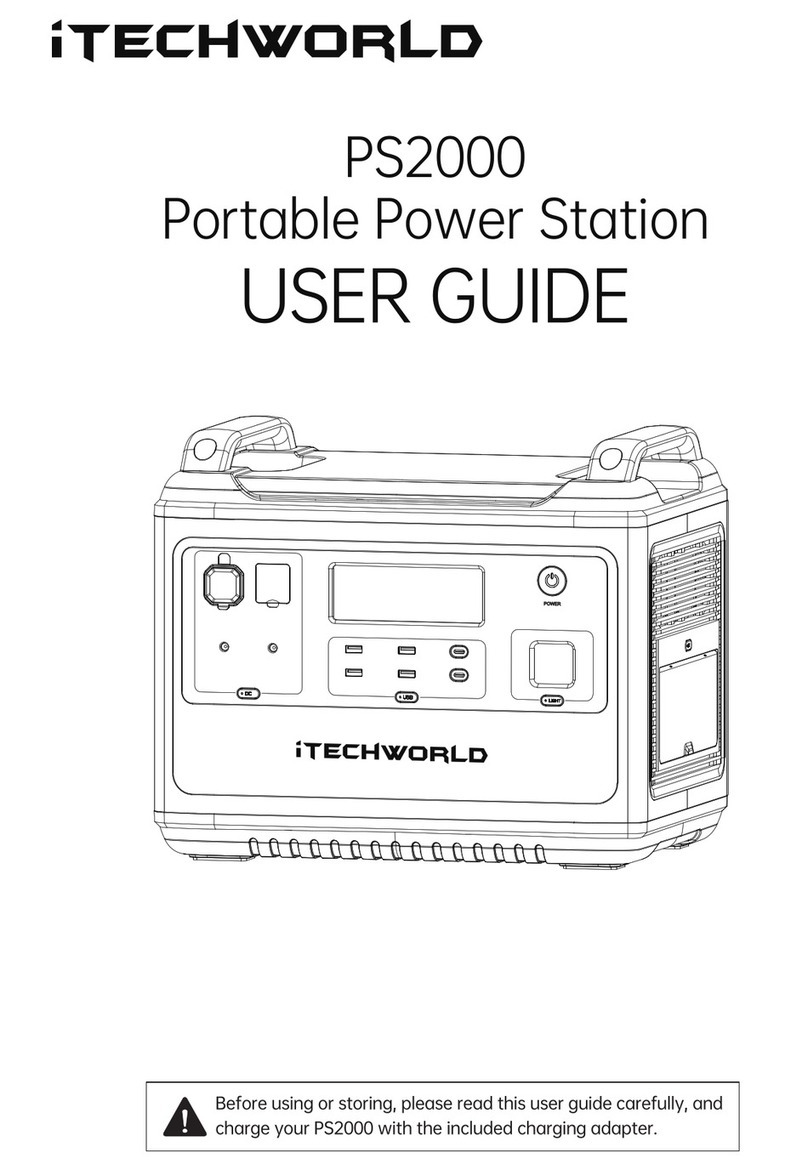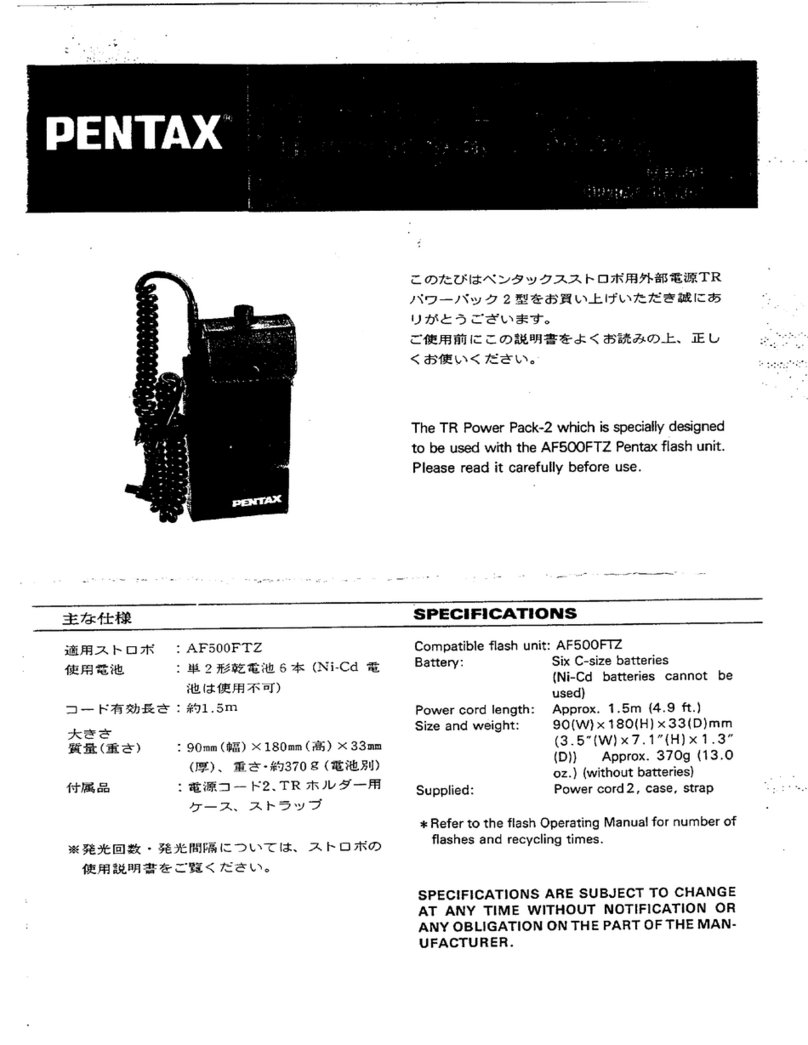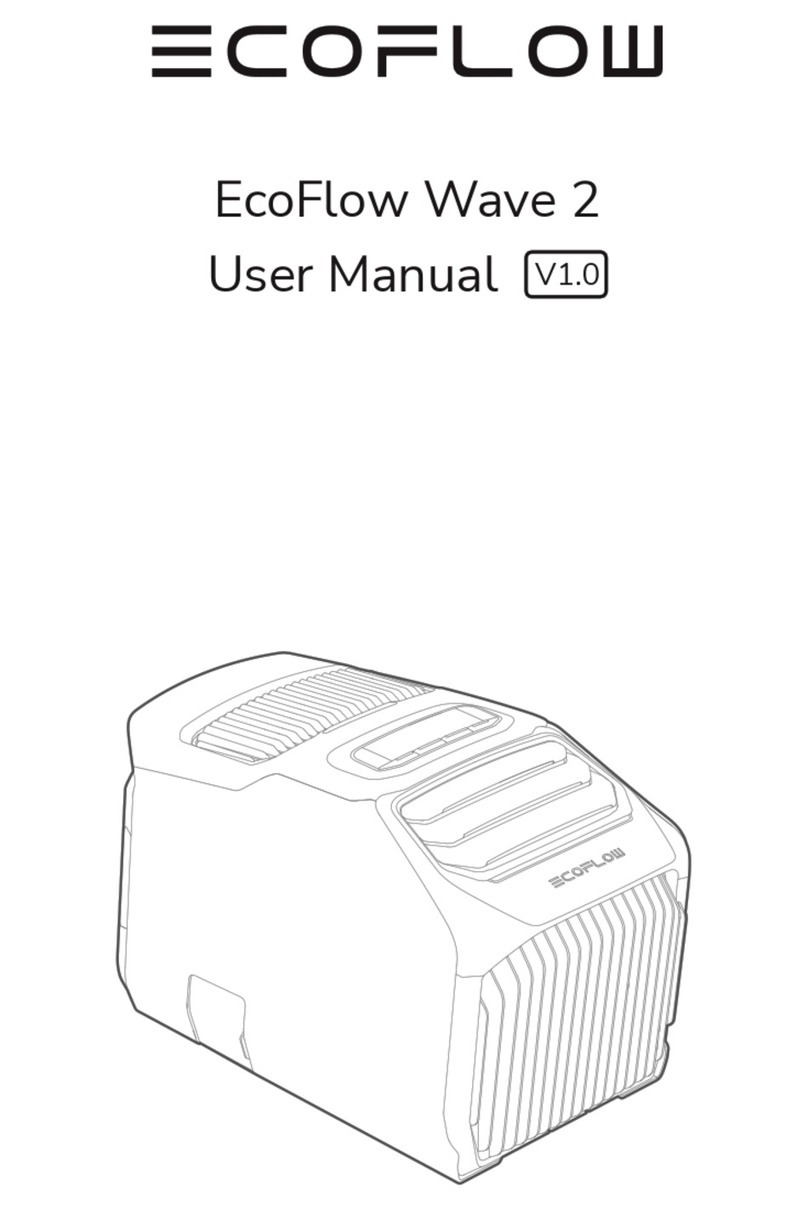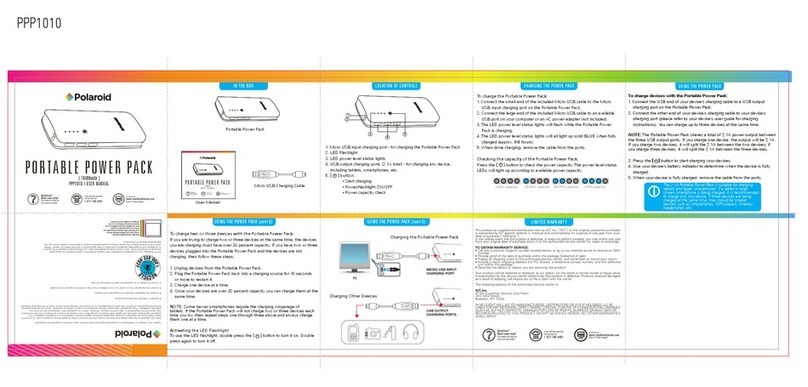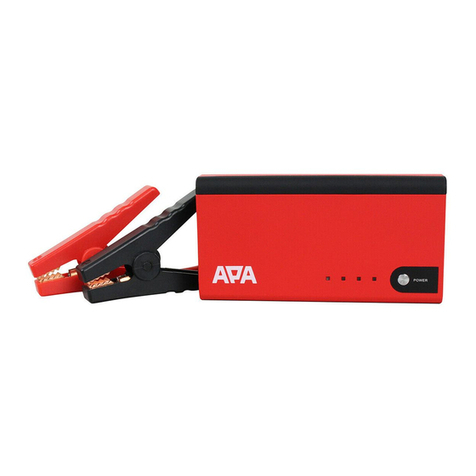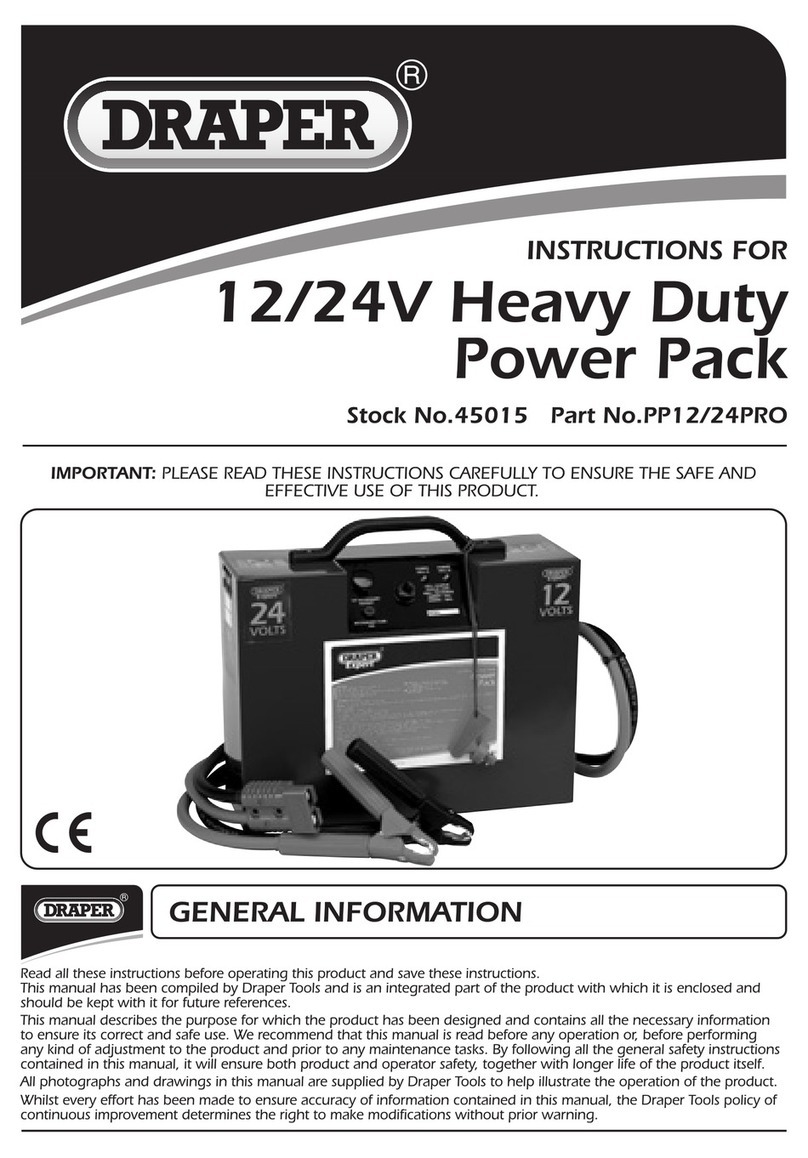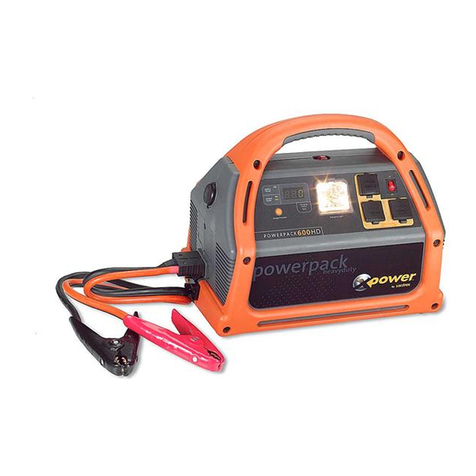
Introduction
3
ŸEnsure the Power Pack DC40 is secured in mobile applications.
ŸDo not alter or modify the Power Pack DC40 under any circumstances.
ŸDo not attempt to charge a non-rechargeable or battery other than 12V.
ŸUnauthorized disassembly, repairs or modifications will void any warranty.
ŸNever attempt to charge a damaged or leaking battery.
ŸThe Power Pack DC40 is used for charging 12V lead-acid and automotive Lithium batteries only.
ŸDo not use for any purpose other than indicated in this manual.
ŸDisconnect any existing batteries.
ŸEnsure all connections are secure and cables are installed in a safe manner.
ŸAvoid open flames in the vicinity of the battery.
ŸInstall the supplied in-line fuse as indicated in the installation instructions.
ŸAttempts to use the Power Pack DC40 for purposes other than indicated in this manual will void the
warranty.
ŸBefore installation, read the instructions carefully.
ŸUse the correct cabling size and fuses in accordance with the installation instructions.
This combination results in a self-contained split-charge system that is at-home in the vehicle or in camp
and can be used to power fridges, lights, pumps and other 12V appliances.
The Power Pack DC40 can be charged from a vehicle alternator, solar panels or external chargers making
it versatile for a variety of applications.
The Power Pack DC40 supports 12V lead-acid (wet, calcium, Gel, AGM) as well as lithium batteries.
Two dual-port USB modules with fast charge allows several smart devices such as smart-phones, tablets,
GPS, cameras and other USB-devices to be powered up to 18W on each port.
to fridges and other small appliances. These connectors can also be used with external battery chargers
as an alternative to the built-in dedicated charge port.
The National Luna Power Pack DC40 blends the convenience of a portable battery system and the
performance of a DC-DC battery charger with MPPT solar regulator.
The primary charge input supports 12V and 24V vehicle systems and will provide up to 40A of current to
the auxiliary battery using an optimized 6-stage charge algorithm.
Heavy-duty connectors can be used for connecting a variety of accessories from inverters (600W max)
A built-in 40A MPPT solar regulator circuit supports solar panels up to 42V and provides up to 40A (600W)
charge current to the battery.
Supported battery types (set to AGM by default) :
ŸLithium-ion, LiFePO4
Temperature Compensation & battery protection :
ŸLead-acid (Calcium, Flooded, AGM, Gel, VRLA)
ŸThe battery charge profile takes into account battery temperature with a sensor (located inside the
battery compartment) for safe charging under various conditions.
Max battery size :
Ÿ330mm x 180mm x 280mm (L x W x H)
SAFETY INFORMATION :



